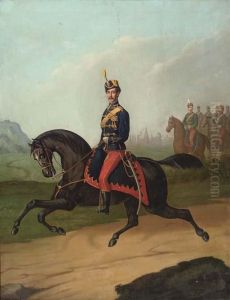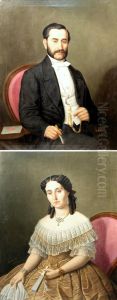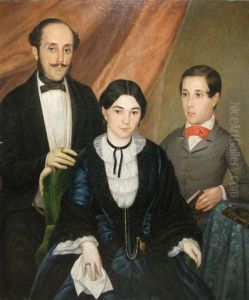Constantine Lecca Paintings
Constantin Lecca was a Romanian painter and muralist, born on August 4, 1807, in Brașov, which at the time was part of the Austrian Empire. He is widely recognized as one of the most significant Romanian artists of the 19th century, and he played a pivotal role in the development of Romanian art during a period of cultural and national awakening.
Lecca studied art in Bucharest and later in Vienna at the Academy of Fine Arts under the guidance of renowned artists of the time. His artistic education was comprehensive, and he was particularly influenced by the Neoclassical and Romantic movements, which were prevalent in European art during the early to mid-19th century. His works encompassed a variety of subjects, including religious iconography, portraits, and genre scenes that often depicted Romanian rural life, thus contributing to the national romanticism of the era.
In 1833, Lecca moved to Wallachia (now part of Romania), where he became a professor at the Saint Sava National College in Bucharest. There he educated and influenced a new generation of Romanian artists. His commitment to art education was a testament to his belief in the importance of cultural development as part of Romania's broader national awakening.
Throughout his career, Lecca was also actively involved in the creation of frescoes for many churches, which was a significant aspect of his work. His religious paintings were notable for their blend of Orthodox tradition with Western artistic principles. These works played a part in shaping the visual culture of Romanian Orthodoxy during a time when the country was seeking to establish its identity separate from Ottoman and Russian influences.
Lecca left a lasting legacy not only through his artworks but also through his role as an educator and mentor to future Romanian artists. His dedication to the arts and his influence on the cultural landscape of Romania were significant contributions to the national identity of Romania. Constantin Lecca died on October 13, 1887, in Bucharest, leaving behind a rich body of work that continues to be celebrated in the history of Romanian art.


